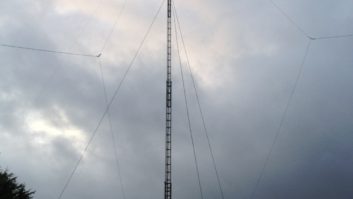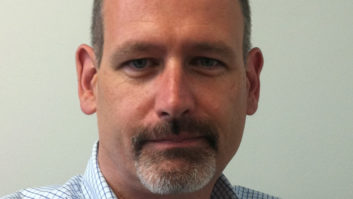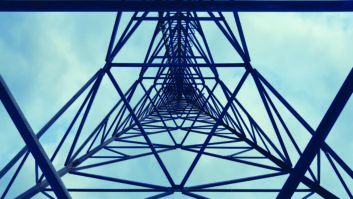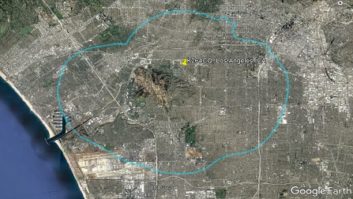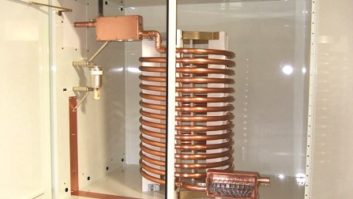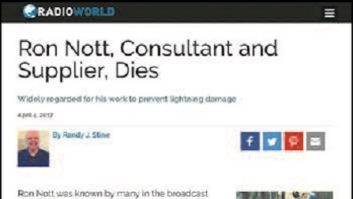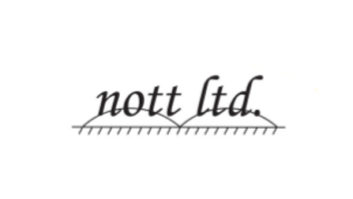The folded unipole
Oct 1, 2002 12:00 PM, By Ron Nott
The folded unipole has been in use in AM broadcasting for more than four decades, providing adequate time to view it in retrospect. Perhaps the earliest instance that it appeared in print was in Radio Antenna Engineering by E. A. Laport in 1952. The fundamentals have not changed much since then, but experience has provided several improvements as well as some weaknesses. There is more to unipoles than just suspending some wires alongside a tower.
If the skirt wires are placed too close to the tower, the shunt capacity between them can defeat the advantages. The wires must be placed at least 18″ from the face, and preferably 30″ except in special cases. Early unipoles were built using guy wire in the skirts, but the steel wire would cause a 20 percent or more loss in efficiency. For good efficiency, the skirt wire must be copper or aluminum clad. The wire should also be stranded to prevent wind vortexing, which causes vibration.
The components of a folded unipole antenna. These are typically sold as a kit and installed by a qualified tower climber.

Installing a folded unipole does not guarantee broad bandwidth. In general, retrofitting a thin, series-fed tower will result in an improvement, but if the antenna is significantly shorter than a quarterwave, bandwidth may be limited. If top loading can be incorporated on a short tower, the unipole can be designed to provide support brackets for the top loading as well as the skirt wires. An advantage of the folded unipole on a short tower is that it normally transforms a low drive point resistance upward, which can improve efficiency and provide easier impedance matching.
Years ago, it was believed that the unipole provided antenna gain and circular polarization. Neither of these is true. In some instances, the folded unipole may provide a small gain, perhaps a fraction of 1dB, because of the decrease in the length-to-diameter ratio. This causes a slight reduction in the velocity of propagation within the antenna, which may make the tower appear to be slightly taller than it actually is. In any case, there is no dramatic improvement. In instances where the bandwidth has been improved, there have been apparent improvements in the effective range of the station due to improved sideband VSWR.
The folded unipole can be modeled using NEC programs, but this can be time consuming. The late John Mullaney had a program written specifically for designing this antenna that was fast and usually accurate. Two interesting phenomena have been discovered while using this program:
- Bandwidth may be optimized. While other factors are also involved, an antenna height between 105 and 115 electrical degrees may be found to have extremely broad bandwidth. This has been confirmed in practice.
- Impedance of short towers may be transformed upward. When a short tower is retrofitted with a folded unipole, an inductor may be placed across the base insulator that will increase the drive point resistance. In some cases this can improve the antenna efficiency. It must be pointed out that for short antennas with substantial transmitter power, RF current through the inductor may be high.
Another advantage of the folded unipole is that it is installed on a grounded tower, which allows installation of UHF and VHF antennas for rental income on the tower. The grounded structure also eliminates lighting chokes and provides a more direct path to ground for lightning. The unipole performs well in directional antenna service if it is properly incorporated into the design. When installed in an area prone to flooding, it can be designed to continue functioning when series-fed antennas fail.
In some instances, the unipole can allow an FM or communications tower to serve as its supporting structure. If the structure is too tall, the upper portion can be detuned, but bear in mind that the guy wires must be segmented, which may be the most expensive part.
Nott is president of Nott Ltd., Farmington, NM.






